 The Rio Grande Pickups Vintage Tallboy Twangbucker can be wired with a push/pull pot or mini toggle that allows selection of a humbucking sound or straight single-coil mode. It includes a custom-made nickel-plated bridge and is available in several colors. Learn more at http://riograndepickups.com.
The Rio Grande Pickups Vintage Tallboy Twangbucker can be wired with a push/pull pot or mini toggle that allows selection of a humbucking sound or straight single-coil mode. It includes a custom-made nickel-plated bridge and is available in several colors. Learn more at http://riograndepickups.com.
Year: 2014
-
Rio Grande Offers Vintage Tallboy Twangbucker
-

Roland V-Studio 20
Roland V-Studio 20
Price: $300 (street)
Info: www.rolandus.com.Home digital recording has come a long way in the last 20 years, to the point where top bands are cutting full albums at home. But there is still a learning curve for the uninitiated, and the software and hardware choices are dizzying. Enter Roland, whose V-Studio 20 is notable because it’s absurdly easy to use, yet has ample pro features. Let’s roll tape.
The V-Studio 20 plugs into a computer with a USB cable and is very user-friendly, with real sliders and knobs like an analog mixer. The unit also features built-in stereo mics and a conventional “tape transport” layout. The inputs accommodate a direct guitar/bass line, a pair of 1/4-inch line cables, and an XLR-type microphone. One disappointment is that the speaker outputs are RCA phono plugs and not 1/4-inch jacks for real studio monitors (thus, you may need adapters), but there are standard connections for headphones and an expression pedal.
The package comes with Cakewalk’s Guitar Tracks program, which is a simplified version of its popular Sonar (note that it’s PC only; Mac users will need their own program). Guitar Tracks is an audio sequencer that will capture, edit, and mix music, and – good news – it’s joyously simple to use. With a guitar plugged into the V-Studio 20 box, users can watch their tracks unfold onscreen as they record.
One of the great assets of the V-Studio 20 is that all the effects any user will likely need are already inside the unit. A virtual multi-effects pedalboard using the company’s COSM modeling presets pops up onscreen, where the user can use their mouse to tweak tones and effects. And the 36 internal Boss effects are very good – from clean to crunch, there’s a number of excellent amp tones, as well as loads of compression, reverb, chorus, flange, delay, and more. There’s also more than 1GB of drum tracks and loops to help build tracks further.
Perhaps the best aspect of the Roland V-Studio 20, however, is that it is highly intuitive. Even those who haven’t delved into digital recording will be able to get onboard quickly. It should be noted, though, that it’s important to have a decent PC with an up-to-date operating system. Guitar Tracks was tested on a Windows XP machine with no problem (it also works on Windows Vista and Windows 7). In all, the Roland V-Studio 20 is one of the best recording packages for the newbie out there, as well as a useful tool for more experienced players who want a simple system without the headaches.
This article originally appeared in VG August 2013 issue. All copyrights are by the author and Vintage Guitar magazine. Unauthorized replication or use is strictly prohibited.
-
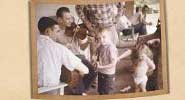
Ricky Skaggs
 Born in rural Kentucky in 1954, Ricky Skaggs (named for “I Love Lucy’s” Ricky Ricardo) stands today as a supremely versatile musician. With his band Kentucky Thunder and his own record label, he focuses on the traditional bluegrass that nurtured him from boyhood on. That journey, from bluegrass child prodigy to admired young sideman to ’80s mainstream country star, balanced by the ups and occasional downs of his personal life, makes for interesting reading.
Born in rural Kentucky in 1954, Ricky Skaggs (named for “I Love Lucy’s” Ricky Ricardo) stands today as a supremely versatile musician. With his band Kentucky Thunder and his own record label, he focuses on the traditional bluegrass that nurtured him from boyhood on. That journey, from bluegrass child prodigy to admired young sideman to ’80s mainstream country star, balanced by the ups and occasional downs of his personal life, makes for interesting reading.Among memories of various Nashville stars, his recollections of the pillars of bluegrass particularly stand out. A friend of Bill Monroe, Flatt and Scruggs, his former boss Ralph Stanley and one-time Stanley bandmate Keith Whitley, he captures their human and their lighter sides.
His memories of fine instruments like his first Gibson mandolin and a 1924 F-5 Loar he took out a bank loan to purchase are especially enjoyable.
Reflecting on the excitement of discovering Django Reinhardt, Skaggs recalls marveling at his music’s similarities to bluegrass. Any musician can relate to his ’80s dilemma of lacking a lead guitarist for one tour and having to get his own guitar chops up to speed. Too often, such memoirs give the music short shrift. Not this time.
This article originally appeared in VG‘s February ’13 issue. All copyrights are by the author and Vintage Guitar magazine. Unauthorized replication or use is strictly prohibited.
-
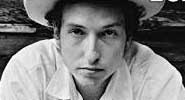
Bob Dylan and the Band

Fans file it under Bob 101. Hunkered in the Catskills in 1967 after reportedly cracking up his Triumph motorcycle a year earlier, Dylan invited the rockabilly musicians who backed him on his divisive ’65-’66 tour to record some demos at his home. Many of the resulting recordings circulated unofficially for years. Meantime, said backing musicians went on to acclaim as The Band. In 1975, they spit-shine 16 of the ’67 tracks, add eight of their own, and voilà: The Basement Tapes.
Available in two packages, “Complete” and “Raw,” The Bootleg Series Vol. 11 was produced with help from The Band’s Garth Hudson, who recorded the originals, and definitively answers a question that has dogged Dylanologists for decades: What was on the rest of those demos, recorded when Dylan was revisiting country, soul, and way old American music just as rock was suffering the taint of psychedelia? In his liners, Sid Griffin even claims The Basement Tapes are the blueprint for alt-country (a claim that ignores Doug Sahm, Gene Clark, and others, but never mind).
Both packages feature scads of unreleased material. In fact, the 138-track “Complete” purports to present the sessions in near entirety and chronological order, as well as Hudson’s pre-1975 stereo mix nixed in ’75. The econo “Raw” serves 38 cuts, and both restore the Dylan songs from the ’75 release to their “unadulterated” form, or at least remove the 1975 overdubs.
A Dylan classic the way it should have been done.
This article originally appeared in VG‘s March ’15 issue. All copyrights are by the author and Vintage Guitar magazine. Unauthorized replication or use is strictly prohibited.
-
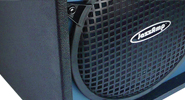
Henriksen’s JazzAmp 112-ER
Henriksen’s JazzAmp 112-ER
Price: $999 (retail)
Info: www.henriksenamps.com.Traditionally, jazz guitarists have sought a mellow tone in which single notes exhibit a horn-like timbre. Unfortunately, this often means sacrificing chord clarity. Henriksen Amplifiers’ JazzAmp series is a bid to give jazz guitarists fluid solo lines and warm, clean chordal articulation.
The JazzAmp series’ flagship is the portable 112-ER (Extended Range), which has an enlarged speaker cabinet to accommodate bassists and a switchable tweeter to enhance the response of acoustic instruments. Weighing in at 31 pounds, the 112-ER is housed in a compact 14″x15″x13″ cabinet. Eleven-ply Finnish birch is covered with tolex and reinforced with metal corners. The works are mounted on a steel chassis.
The 112-ER’s top-mounted controls include volume and five EQ knobs from 100 Hz to 10 kHz, each of which is “flat” at 12 o’clock. An on/off rocker switch (lighted when on), line out and input jacks, and a digital Reverb knob with accompanying slider on/off switch complete the lineup.
The back of the 112-ER has a metal heat sink, a power cable connector, and a tweeter on/off switch that’s mounted close to an upper corner to minimize the risk of damage. A speaker output jack allows for an 8-ohm or greater extension speaker, increasing the basic power of the JazzAmp 112-ER from 120 watts RMS to a hefty 160 watts RMS. A fuse drawer holds a 1.5-amp slow-blow fuse and a spare.
A front view of the JazzAmp shows the Eminence APT50 tweeter mounted at the upper right, a bass port at the upper left, and a 12″ Eminence Beta-A 12 speaker mounted behind an extruded metal grille featuring the JazzAmp logo. (Henriksen also makes a BluesAmp that features the Eminence Legend 1258 speaker.)
The JazzAmp comes with a succinct but informative user manual that includes warranty information (two years) and a guitar frequency chart that is helpful for dialing in desirable sounds.
The JazzAmp 112-ER was tested at two solo jazz guitar gigs with two Wilson Nouvelle 173/8″ archtop guitars, one fitted with a DeArmond Model 1100 Adjustable Rhythm Chief and the other with a Fishman archtop transducer bridge wired through a custom Paul Webb/Fishman Powerchip preamp. With the tweeter off, the 112-ER interacted with the DeArmond single-coil suspended pickup and the big spruce and maple body to produce that legato sound beloved by jazz players for single-note lines, but with fine note-to-note definition for more pianistic chord work. The five-band EQ made it easy to achieve an eminently workable plug-and-play sound, although an EQ with sliders would have made it easier to gauge the equalization visually. Switching the tweeter on changed the sound noticeably, of course, but without any jarring treble edginess – the result was still a warm jazz guitar sound, clean and never overdriven.
Although the Fishman bridge is notoriously difficult to dial in without high-end harshness, with the help of the Powerchip to boost the frequencies for a natural sound, the JazzAmp delivered a remarkably even, “woody” sound with the pickup/preamp combination. Any boominess from the thin, X-braced sound plate was easily controlled with the EQ. Fingerstyle or with a thick plectrum, the attack was defined but not scratchy.
The 112-ER also brought out the depth of sound inherent in the rosewood and spruce construction of a Martin 000-28 Clapton signature model outfitted with an LR Baggs Element pickup. The sharp voltage-related attack spikes common to under-saddle pickups were absent, even when experimenting with the tweeter on and the EQ in what, with sliders, would have been a classic “smile” configuration. Set with a flat EQ profile, the Martin sounded a bit boxy, but with five bands of EQ available, it was easy to achieve a very natural representation of the instrument. The digital reverb control delivered a subtle response until about the 11 o’clock position, where it became a more obvious effect.
The Henriksen JazzAmp 112-ER is a thoughtfully considered package, capable of translating percussive fingerstyle techniques, advanced chord voicings, and high-octane single-note lines in a warm but clean manner that old-school tube amps are hard-pressed to deliver. It also delivers enough volume for club dates, recording sessions, and rehearsals, and the line out option makes it easy to patch into a bigger sound system when necessary. The 112-ER doesn’t shoot to reproduce the visual or sonic vibe of vintage tube icons, but it’s an ideal tool for players who want to express a classic jazz sensibility while enjoying the portability and dependability of modern solidstate technology.
This article originally appeared in VG August 2013 issue. All copyrights are by the author and Vintage Guitar magazine. Unauthorized replication or use is strictly prohibited.
-

Michael Lee Firkens
 In 1990, Michael Lee Firkins’ first album made a monstrous splash in the guitar community. His soulful use of the tremolo bar showcased a signature style that has morphed to encompass more traditional guitar techniques.
In 1990, Michael Lee Firkins’ first album made a monstrous splash in the guitar community. His soulful use of the tremolo bar showcased a signature style that has morphed to encompass more traditional guitar techniques.Yep is a Southern-rock opus 10 years in the making, with Firkins as producer, guitarist, and vocalist. His band includes bassist Andy Hess, drummers Michael Bland and Matt Abts, and Chuck Leavell on keys.
Simmering in soulful flavor, the album begins with the honky-tonk of “Golden Oldie Jam” with great bar-room piano from Leavell and slippery slide from Firkins. “Cajun Boogie” takes us to the swamp with its gutsy slide tones and grooving second-line drumming.
“No More Angry Man” features Firkins’ reso-tele (a resonator cone inside a Telecaster body) to great affect. “Out Of Season” is a way-back machine to a time when Southern rock shared the air waves with pop music of the ’70s.
With Gregg-Allman-style vocals, Yep travels that dirty backroad between Lynyrd Skynyrd, the Allman Brothers, and Black Crowes. Firkins has crafted a singer/songwriter album with exquisite production and luxurious guitar playing.
This article originally appeared in VG‘s February ’13 issue. All copyrights are by the author and Vintage Guitar magazine. Unauthorized replication or use is strictly prohibited.
-
Haynes, Trucks Set Departures from ABB
Guitarists Warren Haynes and Derek Trucks have announced that 2014 will be their final year as members of the Allman Brothers Band. The t
 wo have been members for 25 and 15 years, respectively.
wo have been members for 25 and 15 years, respectively.“I joined the Allman Brothers Band in 1989 for a reunion tour with no promise or expectations of it going any further,” said Haynes. “Based on the success of the tour and the uncanny chemistry between the original members and the new members, we decided to continue and see where it all led. Now, 25 years later, it has been an amazing experience. I’ve always said that if I were to join a band that I grew up listening to the ABB would be at the top of that list. The original version of the band was a huge influence on me and I’m sure that the countless hours I spent listening to and studying that music helped shape me as a musician. As proud as I am of being a member of such a legendary band, I’m even more proud of the music that we’ve made together and of being a part of carrying their original vision into the future.”
“I got the call to join the Allman Brothers while on tour with my own band at the age of 19,” added Trucks. “It was out of the blue and felt surreal. I leapt at the chance. This was the music that I had cut my teeth on and it was the distinctive sound of Duane’s guitar that inspired me to pick up the instrument in the first place. I didn’t know how long it would last, only that I would let the music lead me and teach me. While I’ve shared many magical moments on stage with the Allman Brothers Band in the last decade plus, I feel that my solo project and the Tedeschi Trucks Band is where my future and creative energy lies. It’s a difficult decision to make, and I don’t make it lightly.
2014 marks the ABB’s 45th year, and among its tour dates is a a now-customary two-week stint at New York’s Beacon Theater, in March.
-
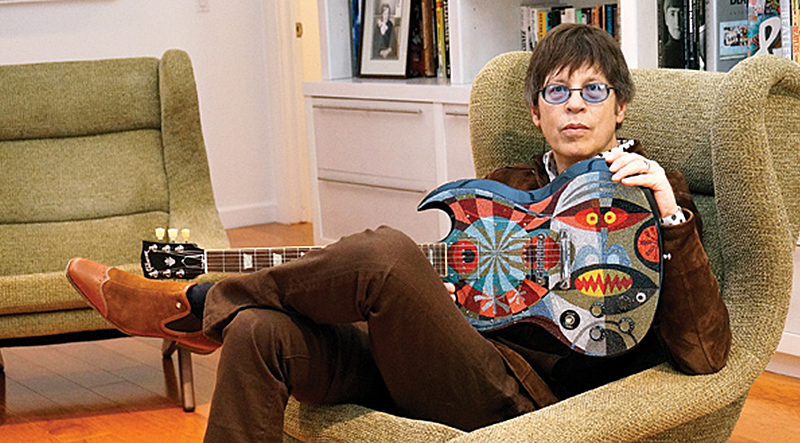
Elliot Easton

Elliot Easton: Glenn Mayeda, courtesy of Elliot Easton. Lefty guitarist Elliot Easton has chosen a different route for his most recent musical venture, but its sonic direction should come as no surprise to any fan who has followed his long career.
Easton Island is a collection of instrumentals that showcase the melodic sensibilities of the guitarist and his current musical associates in Elliot Easton’s Tiki Gods.
In the mid-’90s, Easton played in a band known as the Tiki Gods, but, “The only similarity is the name,” he said. “That other band was R&B-based and designed to back up guest stars and jammers at the China Club; different people, completely different music.”
Many who hear the new album would opine that it’s influenced by the Ventures, Shadows, Duane Eddy, and various other early guitar-/melody-focused artists.
“They were certainly early influences, and I still love all of those – but during that period, I was also inspired by Billy Strange, Al Caiola, Tommy Tedesco, Vic Flick – people like that. And I was listening closely to Billy Mure’s Super-Sonic Guitars in Hi-Fi.”
In his formative years, Easton also paid attention to instrumental melodies and movie soundtracks.
“It’s a sound I’ve always loved,” he said. “Seeing early James Bond and Pink Panther flicks fueled the fire. Later, I learned more about the genre and listened to Les Baxter, John Barry, Ennio Morricone, etc.”
In ’95 Easton recorded “Monte Carlo Nights” with the original incarnation of the Tiki Gods, which appeared on the soundtrack of the Quentin Tarentino film Jackie Brown.
Easton’s work in previous bands typically emphasized melody rather than hypersonic guitar runs or volume, which is another reason he wanted to record an album like Easton Island.
“I’ve always been more of a melodicist, as opposed to flash for its own sake, so my playing here shouldn’t come as much of a surprise,” he said.
Another expectation would be a plethora of unique guitar licks and guitar tones, and the album delivers, offering some surprises along the way, like the twangy guitar on “Mu Empire,” which sounds something like a baritone guitar but it’s actually a ’65 Gibson ES-335 with a Bigsby vibrato.
The guitar tone on “Tabu” sounds like it might be a jazz box, and Easton confirmed that presumption.
“That one is my ’62 Gibson Barney Kessel Custom, which gets that Wes [Montgomery] tone better than any other jazz guitar I have owned. It’s a sensational guitar!”
The guitar tone switch at the 1:45 mark of “Jill’s Theme” (written for Easton’s wife) had a similar sonic mentorship, according to Easton.
“There’s that Wes Montgomery influence again!” he laughed. “I think that one was the neck pickup on my ’65 Gibson Trini Lopez Standard.”
He also used acoustic guitars on the album, and the bright lead work on “Sydney’s Samba” was played on an Ovation classical/nylon-string guitar.
Perhaps the most unique song on the album is “Sabotagia,” which contains some intriguing tempo shifts.
“It’s a song in the spy genre,” Easton explained. “But it’s more of a Cold War/Eastern European/Ipcress File sound than, say, a Bond theme.”
While Easton Island is considered an instrumental effort, some soaring/ethereal female vocals are heard on “Blue Lava” and “Nocturnia,” but it serves a more-supplemental role and is not particularly dominant in the mix.
“Those are just all effects that pop up in the Exotica idiom,” said Easton. “We liked the effect, and it fit well with the music.”
The guitarist noted several additional tracks will be available on the deluxe version of the CD that was scheduled to be marketed in May. He’s also looking into the possibility of marketing Easton Island on vinyl.
One unique visual facet of Easton’s new venture is a custom-finished example of his signature Gibson SG, which has a Polynesia-inspired design that references the new band. The front of the instrument – including the top of the pickups – has a startling graphic.
“The design is by Chris Reccardi, a fine artist and Disney animator, who also happens to be our bass player,” Easton said. “Then it was rendered in Swarovski crystals by Robert Kantor. That’s not a paint job – it’s thousands of tiny crystals!”
Easton is delighted with his most recent musical recording, and not only does he plan to do shows to promote the album, he’s seeking to pursue more soundtrack opportunities.
“This is an ongoing thing,” he enthused. “We plan on playing lots of shows and making more records! We also see our music as being ideal for film or TV, and we want to either license or compose new material for those media. I’m delighted with the band’s lineup, and everyone performed at the peak of their abilities, so I can’t ask for more than that!”
This article originally appeared in VG August 2013 issue. All copyrights are by the author and Vintage Guitar magazine. Unauthorized replication or use is strictly prohibited.
-

Magnatone Twilighter
Magnatone Twilighter
Price: $2,249 (12″ combo, list)
Info: www.magnatoneusa.com.Magnatone is dead, long live Magnatone! The original Magnatone amp company died in 1969 after several decades of making storied “Golden Voice” amps noted for their “real” vibrato effect. Buddy Holly played his Strat through one, Scotty Moore swore by his, and Neil Young remains a believer.
Now, Magnatone is back, and that vibrato sounds sweeter than ever.
We can thank Ted Kornblum for the revival. His family founded St. Louis Music, creators of Crate amps and Alvarez guitars and long-time owners of Ampeg. Launched at January’s NAMM show, the new Magnatone line is American-built, tube-powered boutique amps.
The Magnatone Twilighter will be familiar to vintage fans, resurrecting the look of the original company’s Custom 200 Series of 1957 to 1961, which introduced the vibrato effect. The Twilighter is powered by a GZ34 and a pair of 6V6s for 22 watts in a Class AB design. The test model had a single 12-inch Eminence Governor speaker, but production units will switch to a proprietary speaker made by WGS (a Celestion Blue Alnico upgrade is available).
In honor of Buddy and his beloved Magnatone 280, The Twilighter was tested with a ’56 Stratocaster and proved itself a time machine back to a classic rock and roll sound. This is not a bluesman’s amp: the sound doesn’t easily break up, but for an amp of this power, that’s what overdrive pedals are for. On the other hand, the Twilighter also doesn’t have a lot of headroom, but you don’t usually get that in a smaller combo. Instead, its creamy tone and clear voice would have earned an approving nod from Buddy.
On the road to resurrecting Magnatone, Kornblum enlisted the aid of several notables to voice and test the amps. Young’s guitar tech Larry Cragg helped voice the Single V model. The Rolling Stones are using the new amps on their 50th anniversary tour and Keith Richards has a 10-watt Lyric model for his dressing-room practice amp.
Billy F Gibbons is recording and touring with a prototype Magnatone Super Fifty-Nine, its 45 watts arriving via a pair of EL34 power tubes with two 12″ speakers. Gibbons explains the allure of Magnatone and its vibrato: “Fender amps used a tremolo that blossomed loud and then retreated. The Magnatone’s vibrato was a completely different animal. It used an oddball device called a varistor, which created all-genuine, real vibrato, changing the note’s pitch.”
Magnatone’s “Golden Voice” frequency-modulating vibrato came thanks to engineer Donald L. Bonham, who filed for a patent on his invention in 1954. While Fender and others boasted of having “vibrato” in their amps, the effects were actually just tremolos. Now, Kornblum’s new amps use the same vibrato with silicone-carbide varistors as the originals.
Dial in the Twilighter’s vibrato, and the real fun begins. Strum shimmering chords, hit warbling, watery single notes, or, at an extreme, create Theremin-like wails. The effect is so cool, so far out, that you can’t get enough.
Controls allow the player to adjust vibrato speed and intensity and shift between vibrato and conventional tremolo. The solidly built foot pedal alters the speed of the vibrato or lets you “wah” it between fast and slow to articulate the voice.
The Twilighter also includes reverb with a tube-driven, four-counter-wound-spring long pan. It’s a nice reverb sound, but the unit only has one control, dialing in the amount of reverb but not allowing dwell adjustment. Thus, for all practical purposes, the reverb is really either on or off. More control would be welcome.
The Twilighter’s look is a stylish facelift of the original Custom 200 Series and leaves nothing to be desired. The solid cabinet is constructed of plywood and well finished in vintage brown leatherette. A strong, high-quality leather handle lifts the unit, which is not light: the combo weighs about 55 pounds.
The Twilighter is available in several forms: the combo as tested or with the upgrade Celestion; a head unit with either a 1×12 or 2×10 extension cab, the later fitted with Jensen P10Rs; or as a stereo combo with four 6V6s, 22 watts per channel, and twin 12s.
This is not a reissue. Rather, it’s a modern take on a classic, with upgrades and refinements that would make it a great gigging amp boasting a tone that oozes a glorious vintage vibe.
This article originally appeared in VG August 2013 issue. All copyrights are by the author and Vintage Guitar magazine. Unauthorized replication or use is strictly prohibited.
-
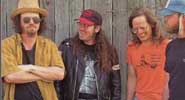
The Bottle Rockets
 Brian Henneman should be a country super-star. For more than two decades, Festus, Missouri’s favorite son, has combined Tom T. Hall wit with Roy Nichols chops as front man of the criminally underappreciated Bottle Rockets.
Brian Henneman should be a country super-star. For more than two decades, Festus, Missouri’s favorite son, has combined Tom T. Hall wit with Roy Nichols chops as front man of the criminally underappreciated Bottle Rockets.But the BRox have always had a rowdy flip side – their love of loud, loud rock equally inspired by Skynyrd boogie and Ramones velocity. Both sides feature in spades on this overdue reissue of their long-unavailable debut and sophomore efforts. Remastered under the watchful eye of producer Eric “Roscoe” Ambel (Joan Jett, Del Lords, Steve Earle), the handsome digipak also piles on 19 previously unreleased bonus tracks.
The Brooklyn Side (1994) remains the Bottle Rockets’ signature LP for most fans, launching with “Welfare Music,” a mando-driven indictment of deadbeat dads and radio pundits alike. The jangly “Gravity Fails” that follows serves up one of the band’s best lines (“Maybe it’s something in my genes/Maybe it’s something in my jeans”), while big Crazy Horse-inspired rockers “Radar Gun,” “1000 Dollar Car,” and “Sunday Sports” cut to the marrow of Middle America in 13 minutes where Springsteen and Mellencamp needed as many albums.
If Brooklyn suffers at all, it’s from a bit of filler (although “Idiot’s Revenge” can be given a pass for
the zinger “She likes Dinosaur Jr but she can’t tell you why/Says ‘You like country music, man, you deserve to die’”).Arguably, though, the Bottle Rockets’ eponymous 1992 debut encompasses their many facets better than any of their eight (and counting) subsequent studio LPs. As if moseying throughthe gate to sniff the air, Henneman opens with “Early In The Morning,” a lament on misspent nights and wasted days, his trademark Missouri drawl accompanied only by a Roscoe Holcomb-worthy clawhammer banjo.
“Gas Girl” opens the carbs for plenty of highoctane rock, as Henneman pines over a fetching convenience store clerk while poking fun at his own sad-sack libido (a theme he has mined with charming effect in many of his most memorable tunes). “Trailer Mama” is a nod to Re-ac-tor-era Neil Young, and “Rural Route” would be right at home in the Supersuckers’ catalog. There’s even a stellar Buckaroos-inspired instrumental (“Bud Nanney Theme”) and a whiff of western swing (“Hey Moon”). The general consensus standout, however, is “Kerosene,” a pedal steel-accompanied weeper with a conscience (“They hated that goddamn trailer so it burnt them up alive”).
The bonus material is a treasure trove, including, among other nuggets, the songs from the five-track cassette (’member those?) by BRox predecessors Chicken Truck, 1991 acoustic demos that Henneman recorded with Jay Farrar and Jeff Tweedy while he was Uncle Tupelo’s guitar tech, and a gorgeous 40-page booklet featuring commentary from Steve Earle, Marshall Crenshaw,
Lucinda Williams, Bun E. Carlos (!), and more.This article originally appeared in VG‘s February ’13 issue. All copyrights are by the author and Vintage Guitar magazine. Unauthorized replication or use is strictly prohibited.





